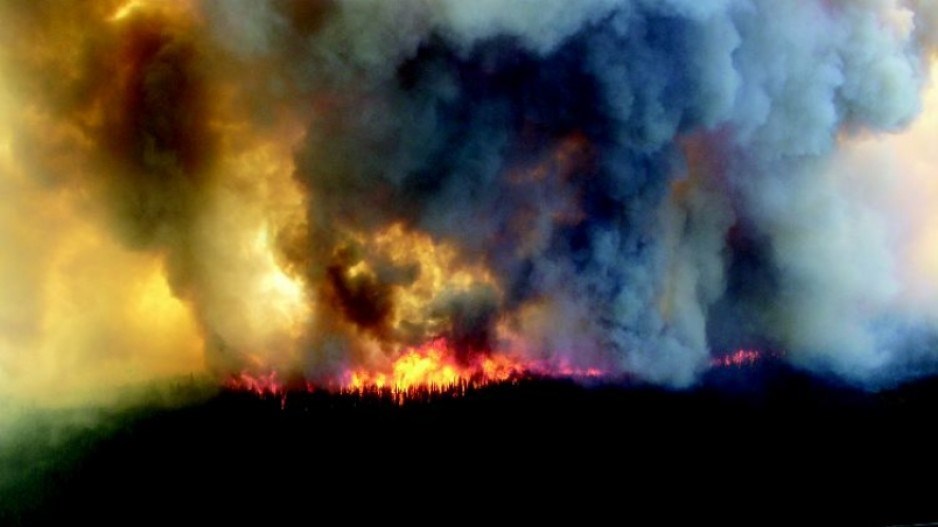COP26, the United Nations 26th conference on climate change, follows hot on the heels of yet another catastrophic wildfire season in British Columbia. Rushed and chaotic evacuations, whole communities razed, and, tragically, residents killed.
Once again, the cost of direct fire suppression exceeded half a billion dollars and total fire costs, including substantial business losses, infrastructure damage, and long-term physical and emotional health impacts, will run into the billions of dollars. By 2030, record-breaking years like 2017, 2018 and 2021 will be typical, and future extremes may be even worse.
Our rapidly changing climate drives this crisis, but it is equally fuelled by a century of outdated forest and fire management practices.
Why are B.C. forests so flammable? How did we get here?
Today, B.C.’s landscape is filled with flammable fuel — living and dead plant biomass — measured in the billions of tonnes. Much of this fuel is slash — the logs, branches and stumps left over from forest harvest.
Averaging 190,000 hectares per year, harvesting since 1990 has generated roughly four million hectares of slash in B.C. Additionally, forests extensively damaged by mountain pine beetle, fire, and other insects and disease are either left untreated or commonly salvage harvested, generating even more slash.
Slash is most effectively reduced by broadcast burning — a low-intensity prescribed fire across an area that consumes the most-hazardous flammable fuels. Unfortunately, due to concerns about safety, smoke and liability, broadcast burns were significantly reduced in the late 1980s.
Instead, slash is piled then burned or often left with no treatment, leaving behind residual fuels that persist for decades and burn intensely — as witnessed during recent uncontrollable wildfires.
Ironically, some parts of B.C. have accumulated excessive trees, shrubs and grasses due to fire suppression and preservation from logging. Today, flammable fuel is in volumes and arrangements that were not present prior to the 1850s, before colonization by Europeans.
What does B.C. need to do to be proactive when it comes to fire management?
Historically, Indigenous land stewardship by burning, combined with lightning ignitions, maintained low fuel loads and rendered the landscapes incapable of sustaining the extreme widespread, high-severity fires that we now experience. By disrupting Indigenous burning, changing land use, aggressively suppressing fires, herbicide spraying deciduous tree species, and extensively managing forests for timber, we have upended once highly-resilient ecosystems.
Paradoxically, by trying to protect forests from fire, we have jeopardized the long-term resilience of our environment, economy and society — including the long-term sustainability and viability of the forest industry.
To reverse the troubling trend of increasingly destructive wildfires, we need circuit-breaker changes to forest and fire management.
We estimate up to 40 per cent of B.C.’s landscape has to change to vegetation patterns that will either slow fires or allow them to only burn at low intensity with manageable short flames.
De-fuelling the landscape requires diversified and flexible management across broad areas, some of which might seem counterintuitive. For example, some recently burned forests should not be replanted with conifer trees but allowed to naturally regenerate as mixed fire-resistant deciduous forests, shrublands or grasslands.
In fact, massive tree-planting programs within fire-prone and fire-dependent environments can exacerbate the fuel problem. Some nature preserves such as old-growth management areas, protected from both human impacts like logging, Indigenous burning, and natural disturbances, like low-intensity fires, are now degraded and require active restoration to retain biodiversity and ecosystem function.
Until now, B.C. has focused efforts to mitigate hazardous fuels exclusively on narrow buffers around communities. With wildfires spreading at high speeds across broader areas, this tactic is woefully inadequate. The 2021 White Rock Lake Fire travelled 18 kilometres in one day, with an expanding fire front measured in the hundreds of kilometres that quickly destroyed homes and neighbourhoods.
Fires of this magnitude are no longer rare and require broad landscape fuel treatments — areas with reduced fuels — to slow fire fronts, provide safe places for firefighters to suppress fires, and allow for swift and safe evacuations.
What are some solutions?
Proactive solutions require coordination, funding, and action amongst multiple levels and types of government departments, while respecting Indigenous sovereignty to manage their territories for biodiversity and cultural objectives. To achieve landscape-level resilience to highly destructive wildfires, we must de-fuel B.C.’s landscapes by removing billions of tonnes of biomass.
Fortunately, there are proven ways to do this, while adapting to climate change and generating jobs and innovative economic opportunities:
- more intensive forest management such as commercial thinning of young timber plantations to ensure regenerating forests are resilient to future drought;
- maximize use of logging slash on harvested areas and after salvaging to minimize waste and carbon emissions from pile burning;
- increase modified wildfire response, allowing wildfires to burn when they do not directly impact communities, critical infrastructure and ecosystem services, especially during wet, cool weather;
- dramatically increase the pace and scale of prescribed and cultural burning to mitigate harvesting slash and to maximize cultural and ecological restoration;
- and dramatically increase the area of proactive fuel treatments around communities and across broader landscapes.
The science is in — the B.C. government has the evidence to make decisions that put us on the right path to effectively deal with increasingly severe wildfire seasons and a rapidly changing climate.
The best part is, we can start tomorrow to build a better forestry model, support Indigenous-led fire stewardship and prescribed burning, and scale-up solutions to meet the problem.
Pro-action in the best interest of our economy, our society, and our environment — the sooner we act, the more prepared we will be for inevitable future wildfire seasons.
—
Robert Gray is a wildfire ecologist working across British Columbia.
Kira Hoffman is a post-doctoral researcher investigating fire ecology at the University of British Columbia.
Lori Daniels is a professor in UBC’s department of forestry and conservation sciences researching forest dynamics and adaptation to climate change.




